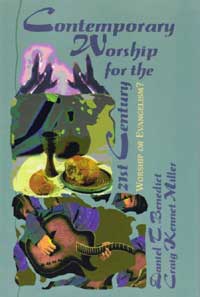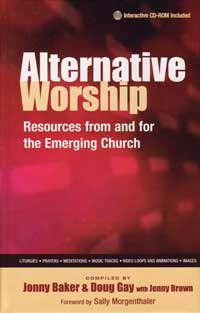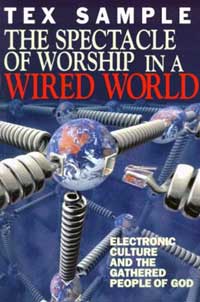I taught a class this morning on contemporary and alternative approaches to worship. It’s part of a course on Reformed and Evangelical Worship run by Trinity College for the Uniting Church here in Queensland.
 We opened by looking at different interpretations of ‘contemporary worship’. I used “Contemporary Worship
We opened by looking at different interpretations of ‘contemporary worship’. I used “Contemporary Worship for the 21st Century”, by Daniel Benedict and Craig Kennet Miller, to explore contemporary approaches to the Book of Common Order, Book of Common Song, and the Seeker Service.
Benedict and Miller, United Methodist ministers, help us realise that the Book of Common Order, basically a poetry-based experience, can be expressed in fresh language and with new expressions of music, while keeping the same form. Be Our Freedom and Uniting in Worship 2 are valuable resources for this approach.
The Book of Common Song, usually known as the praise and worship service, focuses on contemporary song and Biblical teaching. We considered the tension created when developing an expectation of energy and intimacy in the meeting with God and God’s people. Where do we draw the line between manipulation and neglect?
The seeker service, based on the Youth For Christ rallies of the 1940s, seeks to develop an environment in which Christians, their friends and families can explore faith in a non-threatening environment. Willow Creek is obviously the dominant resource for this approach. We explored the criticism of worldliness. Marva Dawn, for example, sees this approach as ‘dumbing down’ worship, diluting true church culture. But, I asked, why is it that we expect Christians to become bland in their approach to popular culture? Is it not possible that someone might worship their whole life in the context of a night club or cafe?

We then explored the Alt Worship movement, learning primarily from the UK and New Zealand scenes. We used Sally Morgenthaler’s introduction to Alternative Worship: Resources from and for the Emerging Church, compiled by Johnny Baker, Doug Gay and Jenny Brown. Sally provides a useful list of intrinsic values found in the alternative worship scene across the world:
- Faithful Improvisation
- Worship focused on triune person of God and acts of God through history
- Profound engagement with postmodern/popular culture
- Worship emerging out of lived community
- Worship reflecting a transforming, resistant presence of the church in the world
Morgenthaler outlines common commitments in alternative worship:
Commitment to:
- Reveal, respond to, experience God through all the arts
- Excavate the rich deposits of visual history, including icons past and present
- Creativity
- Craft worship collaboratively
- Provide tools for honest encounters with God
- Open-ended responses
- Diversity
We went on to explore the narrative developed by Johnny Baker and Doug Gay, in which the UK Alt Worship movement helped post-charismatic and post-evangelical worshippers discover the freedom to dance, interact with imagery and ancient-future forms of liturgy.
 The input finished with a consideration of Tex Sample‘s typology in which he explores oral culture (focused on repeated proverbs, stories and relationship thinking), literate culture (focused on theory, conceptualising and linear discourese), and electronic or multisensory culture (focused on images, sound as beat, visualisation, convergence and immersion).
The input finished with a consideration of Tex Sample‘s typology in which he explores oral culture (focused on repeated proverbs, stories and relationship thinking), literate culture (focused on theory, conceptualising and linear discourese), and electronic or multisensory culture (focused on images, sound as beat, visualisation, convergence and immersion).
With all those frameworks to consider, the class set out to develop a worship experience. We were aware of the GAS principle – we chose Accurate and Simple – an excellent experience with minimum set up that didn’t try to provide a General approach to every element of worship.
Our theme – God saving the world – was inspired by watching Steve Irwin’s memorial service during the class. We’d seen Steve talk about being put on earth to help save the earth – protecting the animals and nurturing a love of the earth.
To the soundtrack of Moby’s “God moving over the face of the deep”, we played samples of Baraka, land and people scapes with “Good” on PowerPoint, and readings from the Scriptures about God’s mandate for the whole earth. We took part in a short responsive prayer of confession.
Resources we didn’t get to cover were Dan Kimball’s “Emerging Worship”, Sally Morgenthaler’s Worship Evangelism, Robert Webber’s Blended Worship, and The Prodigal Project, by Mike Riddell, Mark Pierson and Cathy Kirkpatrick.

wow – thanks duncan. good to see what was helpful to you